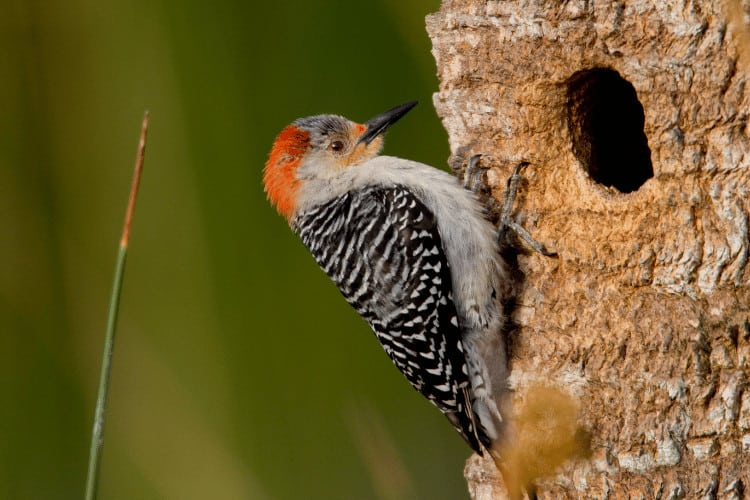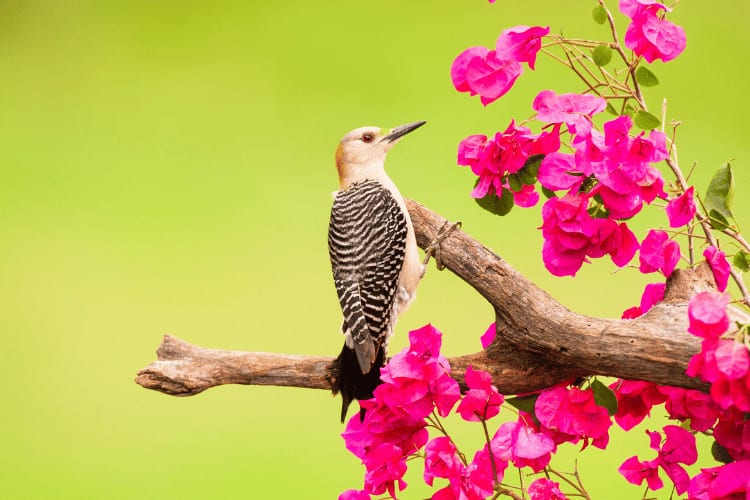Do Woodpeckers Eat Carpenter Bees?
Hello fellow beekeepers and aspiring apiarists!
Today, I’d like to dig into a topic that perplexes many of us who tend to nature’s industrious little creatures, and that is the intricate relationship between woodpeckers and carpenter bees.
In particular, I want to address a question that repeatedly arises in my beekeeping journey: “Do woodpeckers eat carpenter bees?”
As someone who has spent many years nurturing bee colonies and learning about their unique behaviors, I’m excited to share my insights and experiences with you. The short answer is yes, woodpeckers do eat carpenter bees.
Let’s jump right into it!

Do Woodpeckers Feed on Carpenter Bees?
As a beekeeper or enthusiast, it’s important to recognize the natural predator-prey relationship between these two creatures.
Woodpeckers are skilled at extracting carpenter bee larvae from their wooden nests. Especially during late summer, when carpenter bees are breeding, woodpeckers can tap and create holes in wood to access the larvae of carpenter bees.
While this might raise worries, it’s important to view this in the context of ecological balance, as this behavior can actually aid in natural pest control.
However, it’s understandable to be concerned about potential damage to wooden constructions due to woodpecker activity.
To safeguard your carpenter bees and wooden structures, consider proactive measures such as filling carpenter bee holes with wood putty and applying protective coatings. Also, you may want to consider providing alternative food sources like bird feeders to redirect woodpeckers.
Remember, nature’s intricate ecological relationships often come with trade-offs. Understanding these dynamics can ultimately lead to harmonious coexistence between your bee colonies and the world around them.
Understanding the Vulnerability of Carpenter Bees

While woodpeckers do contribute to controlling carpenter bee populations, you must recognize that they are just one piece of the puzzle in maintaining a thriving ecosystem.
Carpenter bees, especially female carpenter bees, have unique nesting habits that help shape their interactions with the environment.
Adult bees tunnel into wooden structures, seeking out nesting sites for their offspring. This nesting behavior renders them vulnerable to various predators, not just woodpeckers!
Insects like carpenter ants, which are drawn to the scent left behind by adult carpenter bees, pose a threat to bee hives.
Further, carpenter bee tunnels and holes can weaken a given piece of wood over time. This weathered wood becomes highly susceptible to infestations by wood-boring insects and fungal decay, which could lead to structural issues if left unchecked.
This is where your role as a beekeeper comes into play!
Implementing preventive measures, like the ones we’re about to go over, can help discourage further nesting and minimize the potential for woodpecker activity.
Protecting Carpenter Bees From Woodpeckers
As beekeepers, we have a vested interest in safeguarding our precious bees from their natural predators, which include woodpeckers.
With that in mind, let’s talk about a few effective measures that can be implemented to prevent woodpeckers from indulging in a carpenter bee feast.
1. Wood Putty
A practical first step in protecting both carpenter bees and wooden structures is to fill existing carpenter bee holes with wood putty.
This simple yet effective measure discourages woodpeckers from accessing the larvae within the tunnels.
Wood putty not only seals off potential food sources for woodpeckers but also preserves the structural integrity of the wood.
Regular inspections to identify new holes and immediate application of wood putty can make a significant difference in deterring these feathered predators.
2. Fortify Wooden Surfaces

Woodpeckers are less likely to engage with a wood surface that has been treated with protective coatings, reducing the likelihood of further structural damage.
It’s important to choose coatings that are safe for both your bee colonies and the environment, striking a balance between protection and sustainability.
3. Visual Deterrents
Visual deterrents can be a valuable addition to your woodpecker prevention strategy.
Reflective tape, mylar balloons, or even wind chimes can create movement and noise that discourage woodpeckers from settling in the vicinity.
These tactics exploit the birds’ natural wariness, prompting them to seek quieter and less challenging feeding areas.
4. Alternative Food Sources
A creative approach to deterring woodpeckers is providing alternative food sources. A couple of bird feeders stocked with suet or other woodpecker-friendly treats can divert their attention away from your carpenter bee colonies.
Placing these feeders strategically near wooden structures allows woodpeckers to satisfy their hunger without impacting your bee populations or damaging the structures.
It’s a win-win scenario that respects the woodpeckers’ role in the ecosystem while safeguarding your interests.
5. Sound Repellents
Sound repellents, like recordings of woodpecker distress calls or predatory bird calls, can deter woodpeckers from approaching.
Such noises mimic the presence of potential threats, which prompts woodpeckers to reconsider their chosen feeding spots.
6. Physical Barriers
Introducing physical barriers is another effective strategy in deterring woodpeckers from preying on carpenter bees.
Mesh netting or wire cloth can be strategically placed over vulnerable wooden surfaces, creating an obstacle that discourages woodpeckers from accessing carpenter bee nests.
Wrapping Up
So, do woodpeckers eat carpenter bees?
The answer is yes. These birds are natural predators of carpenter bees, primarily targeting them during the breeding season when larvae are accessible.
As beekeepers and enthusiasts, we play a vital role in maintaining the equilibrium between our bee colonies, woodpeckers, and the wooden structures they interact with.
Implementing measures like wood putty, protective coatings, and alternative food sources for woodpeckers can help mitigate potential issues, fostering a harmonious coexistence between carpenter bees and woodpeckers.
